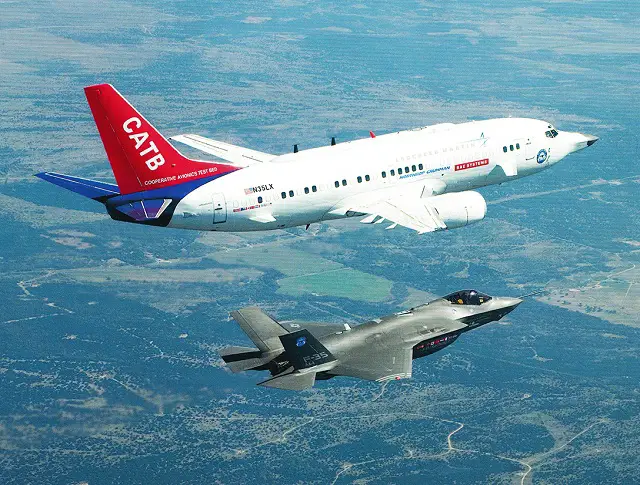Breaking news
Raytheon receives US Navy contract to continue F-35C JPALS test and analysis program.
| 2015
 The F-35 Cooperative Avionics Test Bed (CATBird) supports software development for upcoming F-35B/C developmental and operational tests, including the elements of the Joint Precision Approach and Landing System (JPALS). When fully implemented, JPALS will benefit carrier-based air traffic control by enabling automatic carrier landings (auto-land), enhancing aircraft position reporting, and increasing Tactical Air Navigation (TACAN) functionality. (U.S. Navy photo courtesy of Lockheed Martin) |
|||
The F-35
Cooperative Avionics Test Bed (CATBird), a modified Boeing 737-330, accomplished
initial connectivity and datalink testing between the F-35 Lightning II
and a Joint Precision Approach and Landing System (JPALS) test facility
at Naval Air Station Patuxent River, Maryland in 2014. Earlier this year, the Landing Systems Test Facility also hosted CATBird to prepare for the second developmental test (DT-II) ship trials of the F-35C Lightning II scheduled for later this year. “Initial testing with the JPALS ship system was very successful and met F-35 Lightning II primary test objectives,” said Lt. Cmdr. Chris Taylor, co-lead for the JPALS Integrated Product Team at the Naval Air Traffic Management Systems (PMA-213) program office. “Follow-on testing in April and May was also successful in capturing essential data that will deliver F-35 UDB risk reduction to developmental testing with the JPALS ship system.” A key feature of the former commercial airliner is its ability to transport a team of test engineers in its flying laboratory specially equipped to integrate, test, and validate mission systems avionics for the F-35 Lightning II. The use of CATBird enables the team to test mission systems in a dynamic environment and apply real-time modifications the same day or even hours after a test flight. |
|||




















